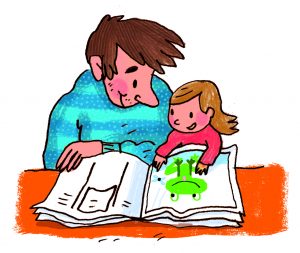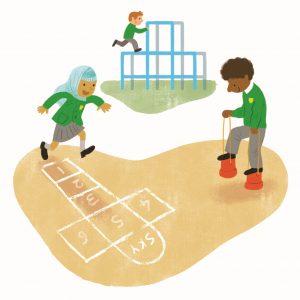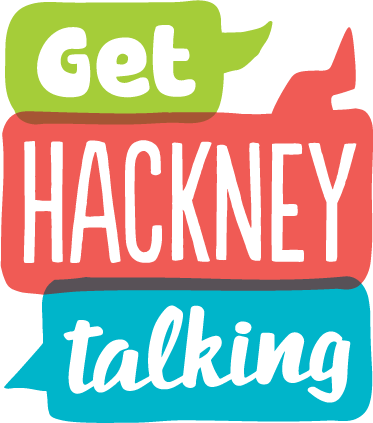Parents often want to help with reading and writing, but it’s hard to know what to expect from a young child. Here’s how you can help.
Read together every day
It doesn’t matter if you follow the story or just talk about the pictures together. Reading books with an adult at home at pre-school age is known to increase school success later. Even children who can’t sit for the whole story can learn to love books!

Have fun with books
Let your child take the lead and show you what pictures they are interested in, and turn the pages or even act out the story. If they don’t stay long – that’s OK, so long as they enjoyed the time looking at a book with you, they’ll want to come back and do it again soon.
Learn to find your name
Children don’t need to be able to read before they start school – but they often recognise the shape of their name. Draw their name in big letters – let them decorate it and put it on the wall or door. Have a treasure hunt and look for their name hidden around the house.
Letters all around me
Go on a walk –even if it is in the house – and see if you can find any letters together. Maybe you will see a favourite letter like ‘M’ or ‘O’ on a cereal packet, in a shop name, or in book. Don’t worry about spelling out the whole word – unless your child is interested of course!

Know about Phonics
In school, children learn about letter SOUNDS. Sometimes it can be confusing because they already know the letter NAME (e.g. C = ‘see’) but not the SOUND (C = ‘ker’). Help them by using Phonics and focusing on letter sounds too.
Making letter shapes
Young children benefit from using large movements for letter shapes to prepare them for writing smoothly at a table later. Try filling a shallow tray with lentils, sand or cornflour. Use fingers, paintbrush or wooden spoon to make big shapes. Or get giant chalks and have fun making shapes on the floor outside!



